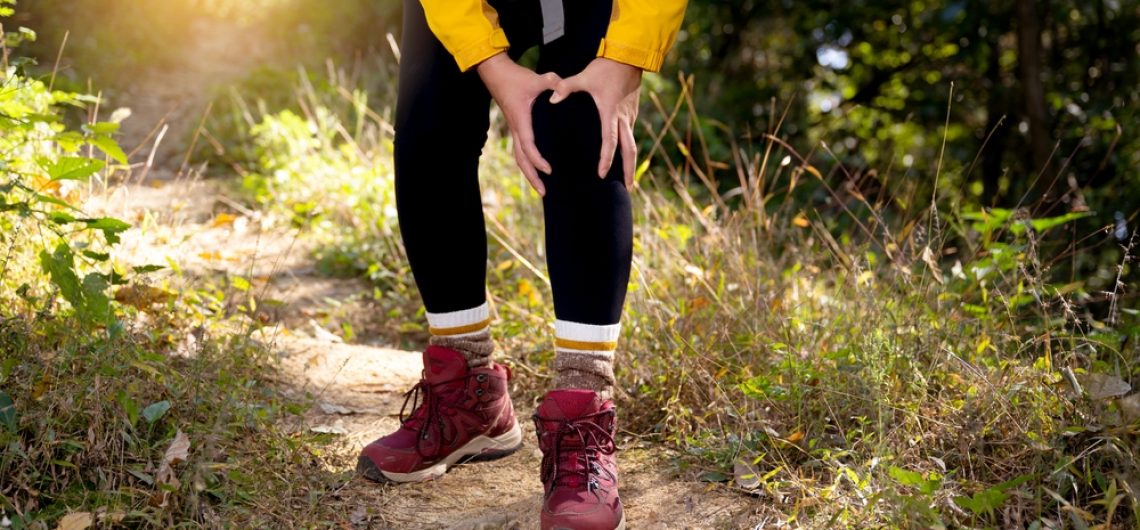Climbing Mount Kilimanjaro with bad knees can be challenging and is not recommended without proper medical advice and preparation. The trek involves long hours of walking, ascending and descending steep terrain, which can put significant strain on the knees.
You would undoubtedly benefit from using two walking poles, which, when used properly, will relieve pressure on your knees and other joints.
You may distribute the weight of each step over four rather than two points of contact with the ground.
On knees, descending will always hurt more so make sure you bring a goof and sturdy knee support.
However, only you will be able to judge how well or poorly your knees are doing and how much discomfort you can stand.
Using trekking poles, strong knee braces, and descending much more slowly.
However, it’s not impossible for individuals with bad knees to climb Kilimanjaro. With the right preparation and precautions, some people with knee issues have successfully reached the summit. Here are some important considerations:
- Consult a Doctor: Before attempting the climb, consult with a healthcare professional, preferably one experienced in high-altitude treks. They can assess your knee condition and provide personalized advice.
- Proper Training: Strengthening the muscles around the knees through targeted exercises can help reduce the stress on the joints. Working with a physical therapist or trainer can be beneficial.
- Choose the Right Route: Some routes, such as the Marangu Route, have gentler inclines, which may be more suitable for individuals with knee issues. Avoid routes with steep descents that could exacerbate knee problems.
- Pacing and Rest: Take the climb at a slow and steady pace to avoid putting excessive strain on the knees. Allow enough time for acclimatization and rest as needed.
- Use Trekking Poles: Trekking poles can provide support and stability, reducing the impact on the knees during descents.
- Pack Light: Minimize the weight of your backpack to reduce the stress on your knees while trekking.
- Medication and Support: Bring along any prescribed medications or knee braces that may help alleviate pain and provide support during the climb.
- Listen to Your Body: Pay attention to any discomfort or pain in your knees during the trek. If the pain becomes severe or unbearable, it may be necessary to descend to lower altitudes.
If you have arthritis and want to climb Kilimanjaro
You should see specialists for a more safer and qualified opinion on a variety of potential therapies, such as steroids, stem cell injections, and joint replacement. or you can agree to have hyaluronic acid injections on a regular basis to help lubricate your knee joints, but you should be aware that there is no miracle treatment for arthritis. Exercise regularly and take on the challenge of strengthening the muscles surrounding your knees to reduce pain.
To learn how to use the appropriate muscles for the appropriate actions and to increase your strength, you will need professional advice and to visit a physical therapist.
Climb Kilimanjaro with a Knee Replacement
We encourage folks who are considering either a partial or total knee replacement to go for it because partial knee replacements can give you a new lease on trekking life. You may be able to keep up your active lifestyle and chase of higher peaks after a successful surgery.
The key to keeping up your active lifestyle after surgery is to follow your rehab program rigorously and never stop moving.
Age has caught up to many globetrotting trekkers’ bodies and minds. Our body’ largest joint, the knee, carries the heaviest stresses, particularly on downhill slopes of steep mountains like Kilimanjaro. For many of us, trekking can become too uncomfortable once the cartilage has completely worn out.
If you don’t have knee cartilage, you can either have a surgical surgery like a knee replacement or learn about it on your own.
You lose a significant portion of your spirit and psyche when you hang up your Vibrams. We spend a lot of our time exploring the natural environment, thus many people choose not to get a knee replacement in order to continue living an active lifestyle. There are several causes—fear of medical procedures is a significant one—but ego is also a factor. Many people who have had knee replacements feel humiliated to join a hiking group with hikers who are in better shape because they believe they have grown “old” and have aged.
However, knee replacements are also performed on adults in their 50s; this is not a symptom of advancing age and should not be shamed.
Because a good knee replacement can remove 20 or more years from your age and destroy your mentality, the shame component is a serious mental error. Your life may be prolonged by having new knees and getting back on the route. Consider it like getting a new set of tires. You have another 50,000 miles to put on the clock as long as the engine is in working order. Active people are getting prosthetic knee surgery in greater numbers. New knees help ardent hikers reach Uhuru Peak at 19,341 feet, the chapel above the forest line.
Makoplasty is a game-changer!
With advances in medical science, knee replacement surgery has become more popular among hikers.
Today, there are around 700,000 procedures performed in the United States, up from 650,000 in 2010. The percentage of Americans over 50 who now have a complete knee replacement is 4.7%. The biggest improvement, known as makoplasty, uses a robotic arm that is directed by a 3D model of your knee that was created using a scan. The robotic arm is guided by your surgeon, and a safety system ensures that healthy bone and surrounding tissue are spared while the necessary areas are resurfaced. To prevent bone-on-bone grinding, metal alloy plates covered in wear-resistant plastic operate as cartilage.
Between partial and total knee replacements, there is a significant difference.
One of your three knee compartments is replaced in a partial replacement. The lateral and front components of the knee are included in a total replacement, which is more intrusive and necessitates a longer recovery period.
Ice and Exercise
After deciding to have replacement surgery, you must approach post-op therapy with the same tenacity you used to climb Kilimanjaro for the first time. It’s a regimen that calls for meticulous attention to your diet, workout program, and maintenance of mental toughness.
Although it is cliché, it will take you three to six months of arduous labor to get your new knee back on the trail after surgery. Without pain, there is no gain.
The first week is the worst because of the acute post-operative discomfort, and ice becomes your greatest friend. Early on, it’s important to move around because you don’t want your muscles to atrophy and you don’t want scar tissue to accumulate. Your core and glutes are two muscles that should be strengthened in order to support your new knee. Others choose to strengthen their knee by spending time in the pool or on a treadmill.
The journey toward mobility
There is an expanding army of people who have had knee replacements and are now back on the climbing circuit, conquering the world’s tallest and most breathtaking peaks.
Remember that climbing Kilimanjaro is a physically demanding and high-altitude trek, and it’s essential to be realistic about your physical condition and limitations. If you have significant knee issues or chronic knee problems, it might be best to consider other adventure options that are less demanding on the joints. Always prioritize your health and safety when considering a climb of this nature.
Depending on your level of activity, medical statistics show that 85 to 90 percent of procedures are successful for up to 15 years. Patients’ ages range from 50 to 80, with 70 being the norm. 60% of patients undergoing knee replacements are female.
Knee replacement is not a simple choice. Before the surgery, there was a lot of preparation to be done, and there was a lengthy journey back to full mountain mobility afterward. Speak with surgeons, enquire frequently, and conduct research. Ask the hikers you are with how their replacements, if any, are doing.
Mountaineers who have undergone surgery have written blogs about their experiences, including what it’s like to climb big mountains like Kilimanjaro again. Like this great experience right here.
Although knees are like tires, life is brief and bodily parts do wear out. Thanks to medical advancements, they can be replaced when they blow out or lose tread. With a replacement knee, your active outdoor life can be extended.
With your new pair of tires, you can carry on your adventures.
![]()


Comments